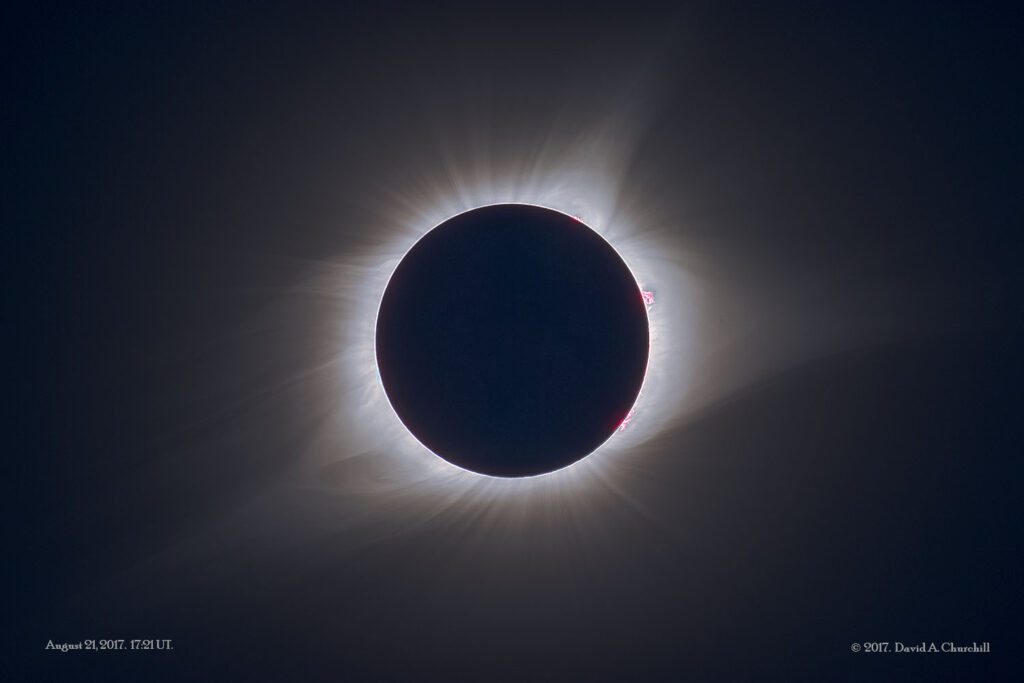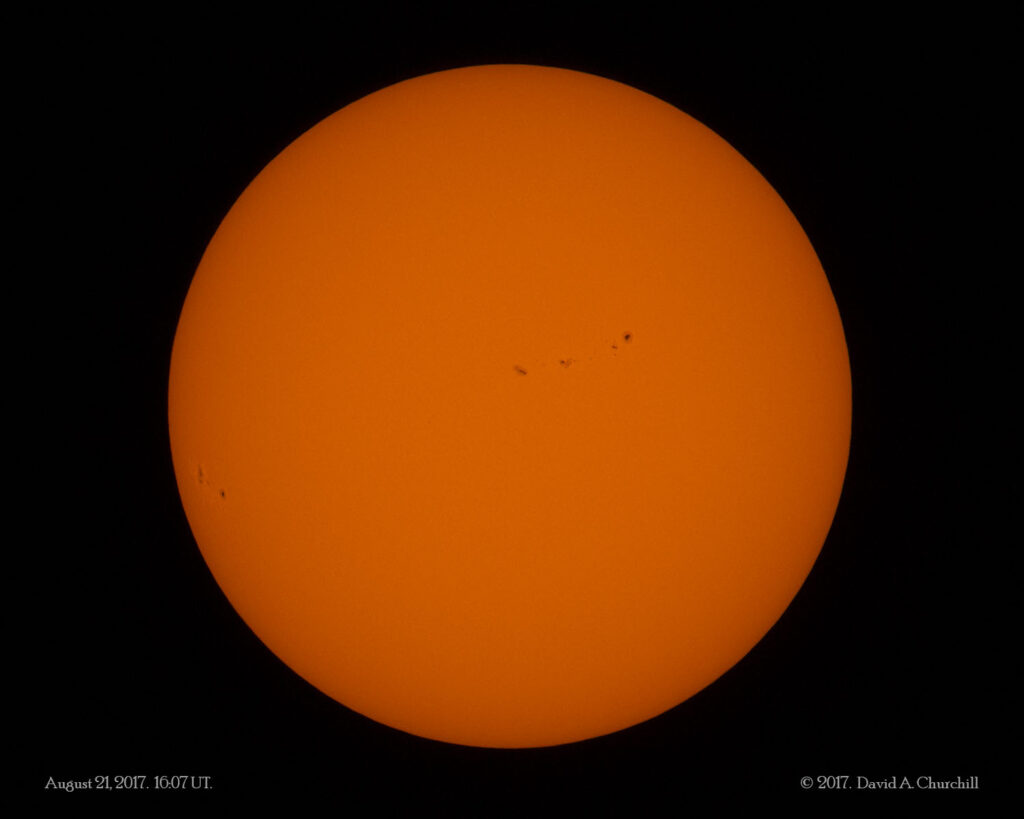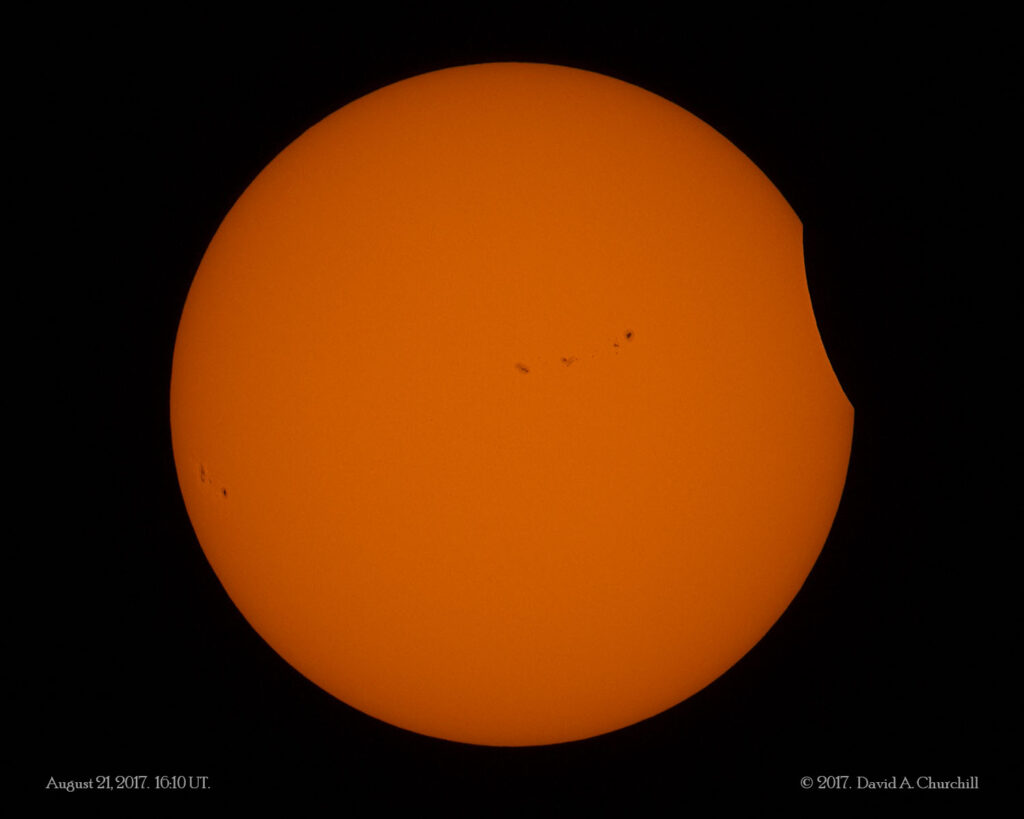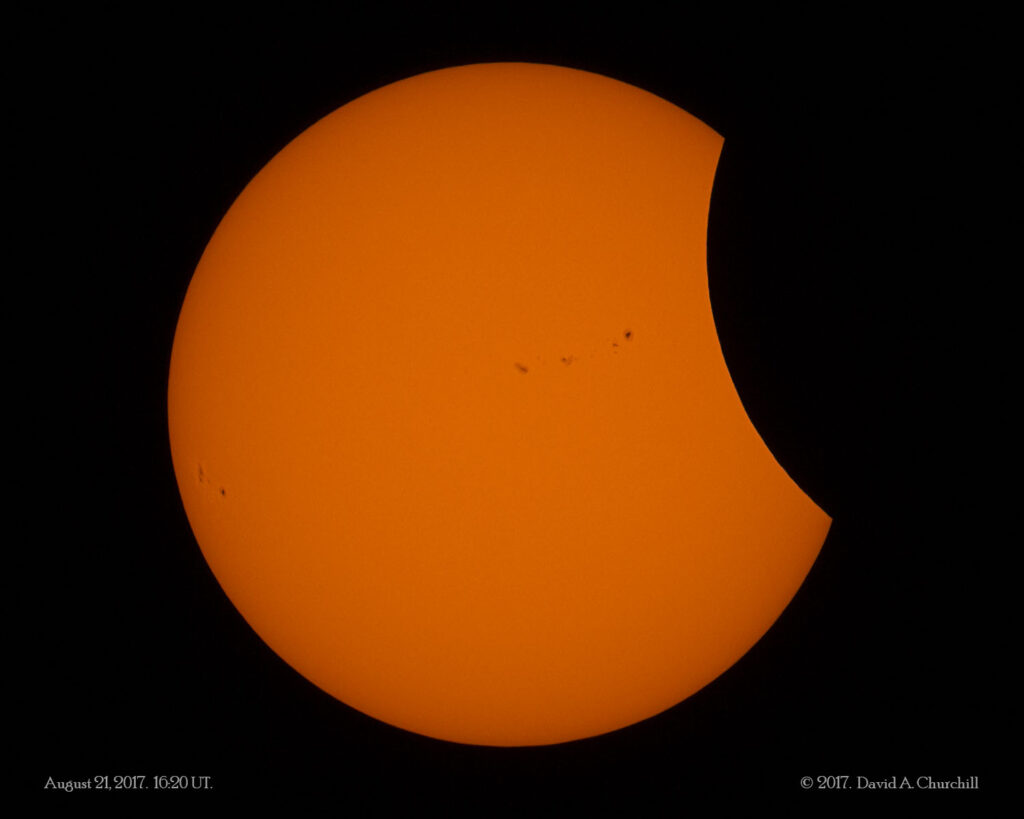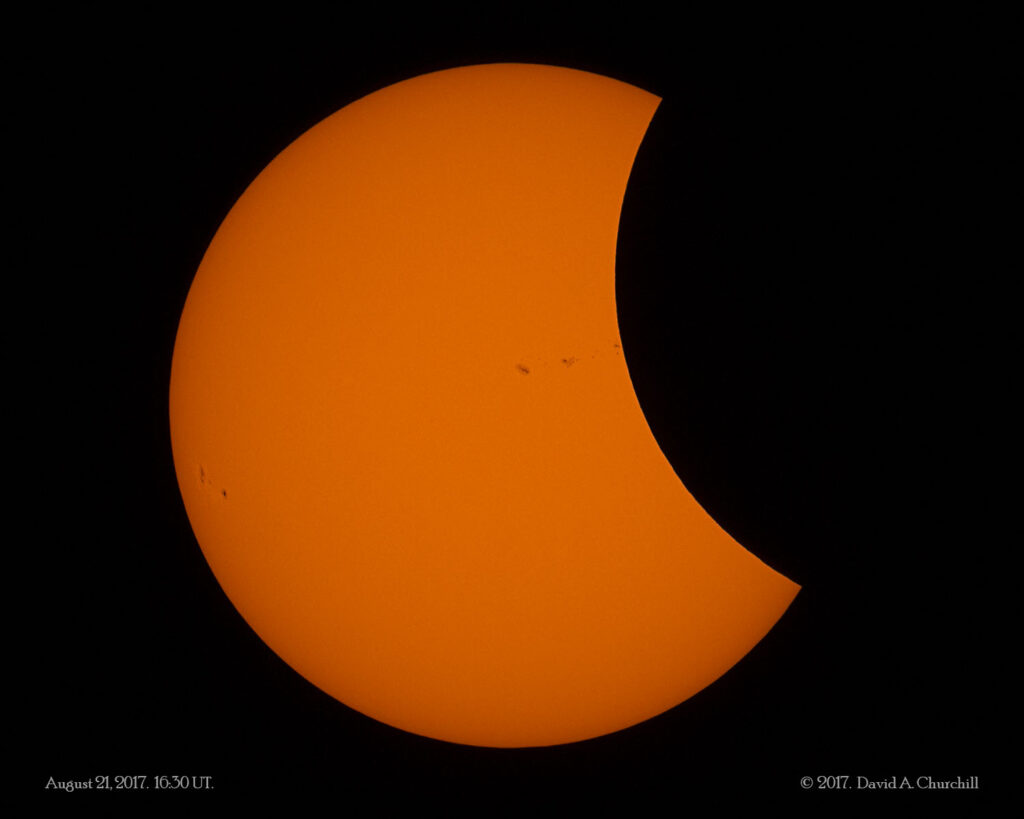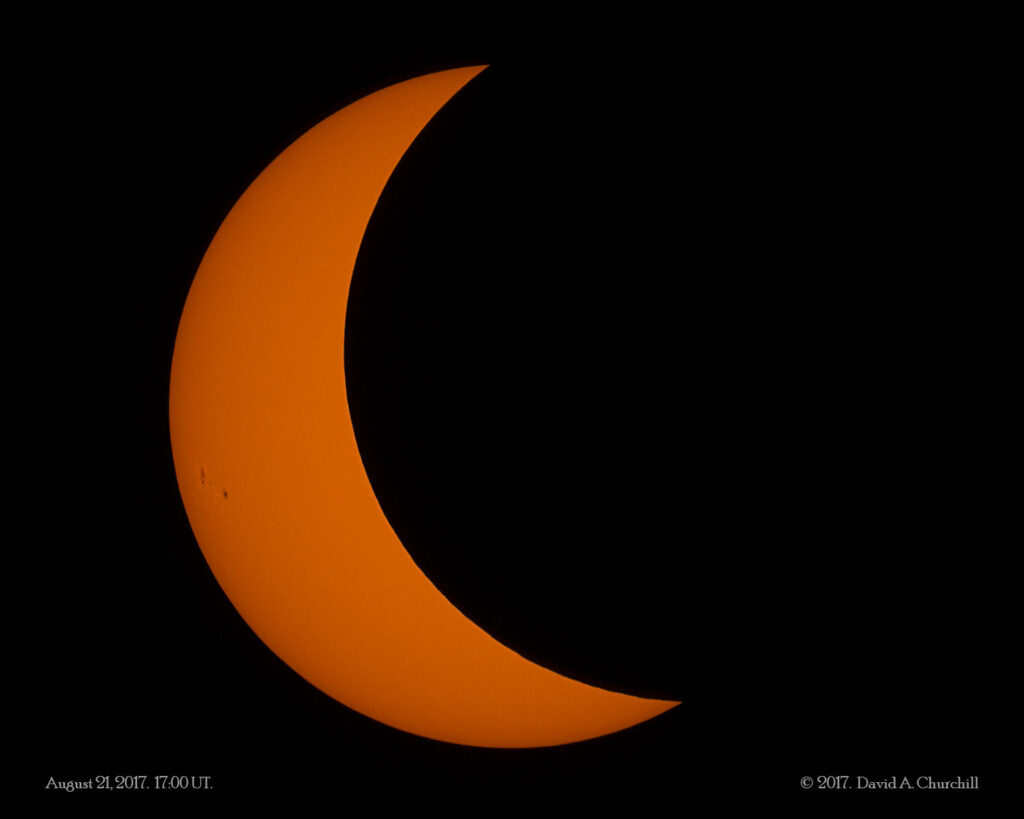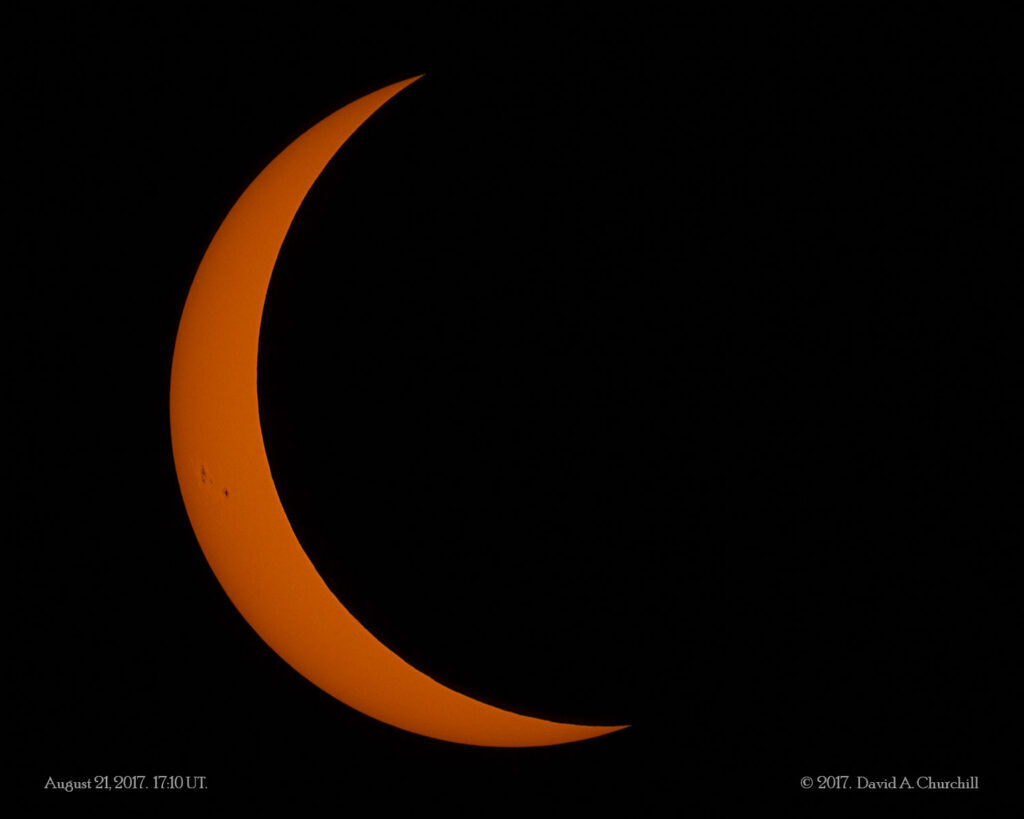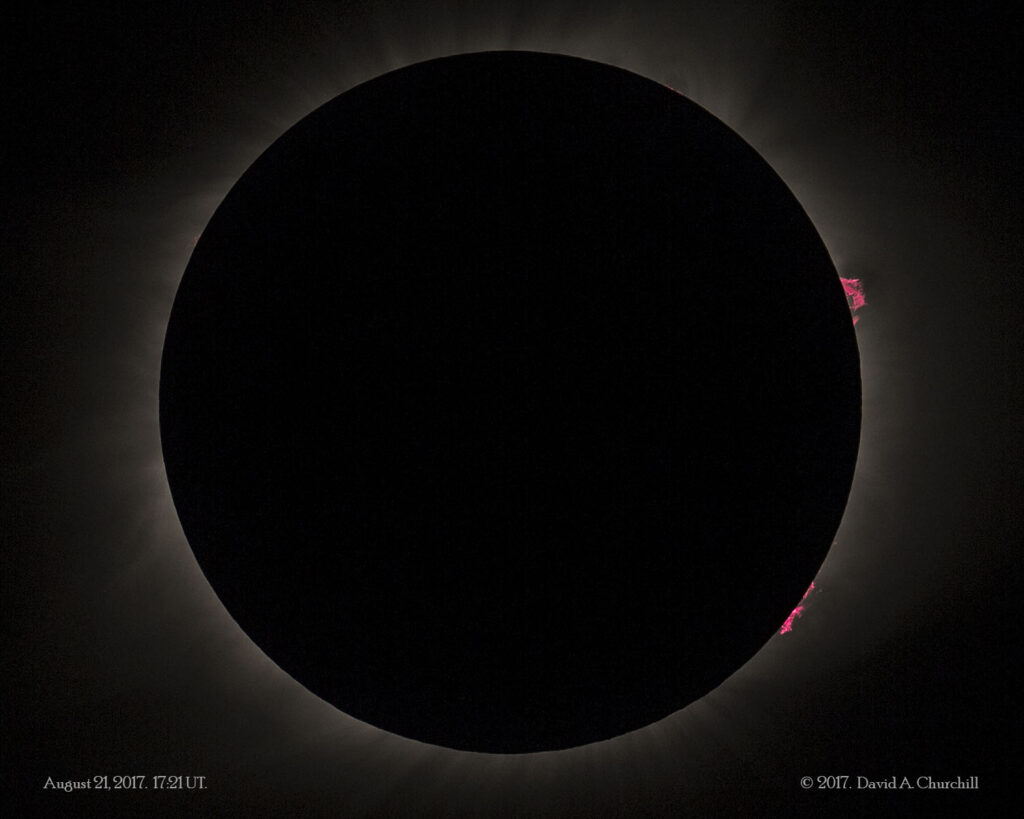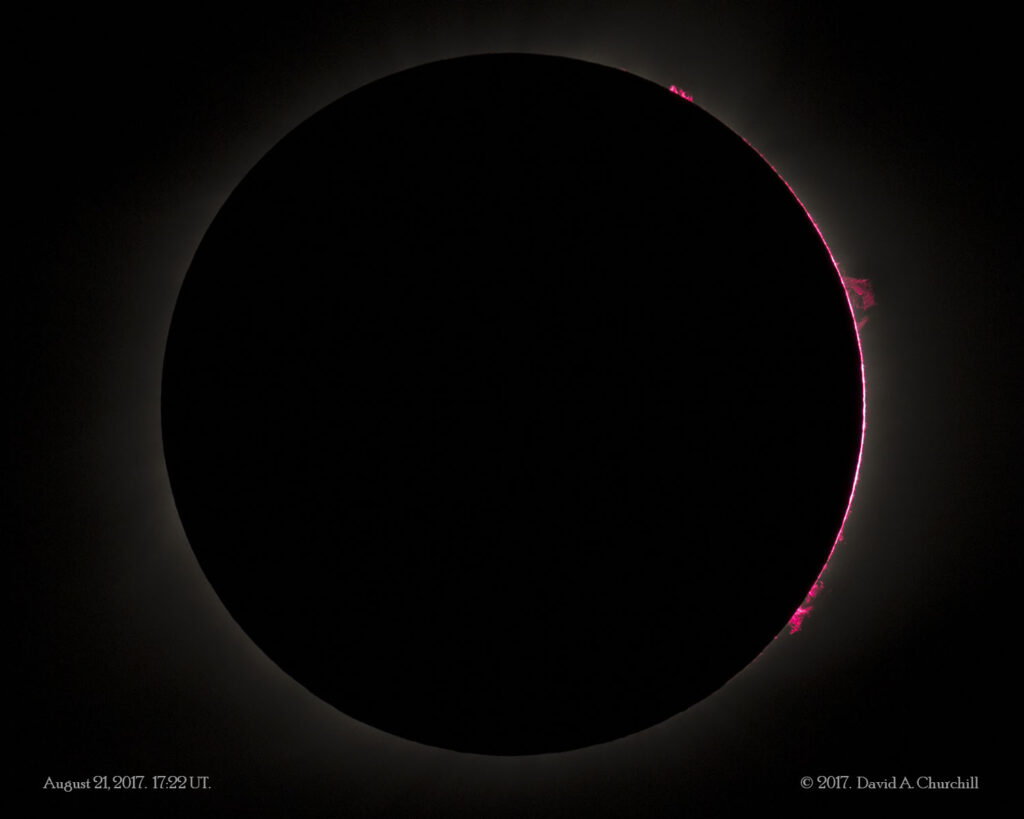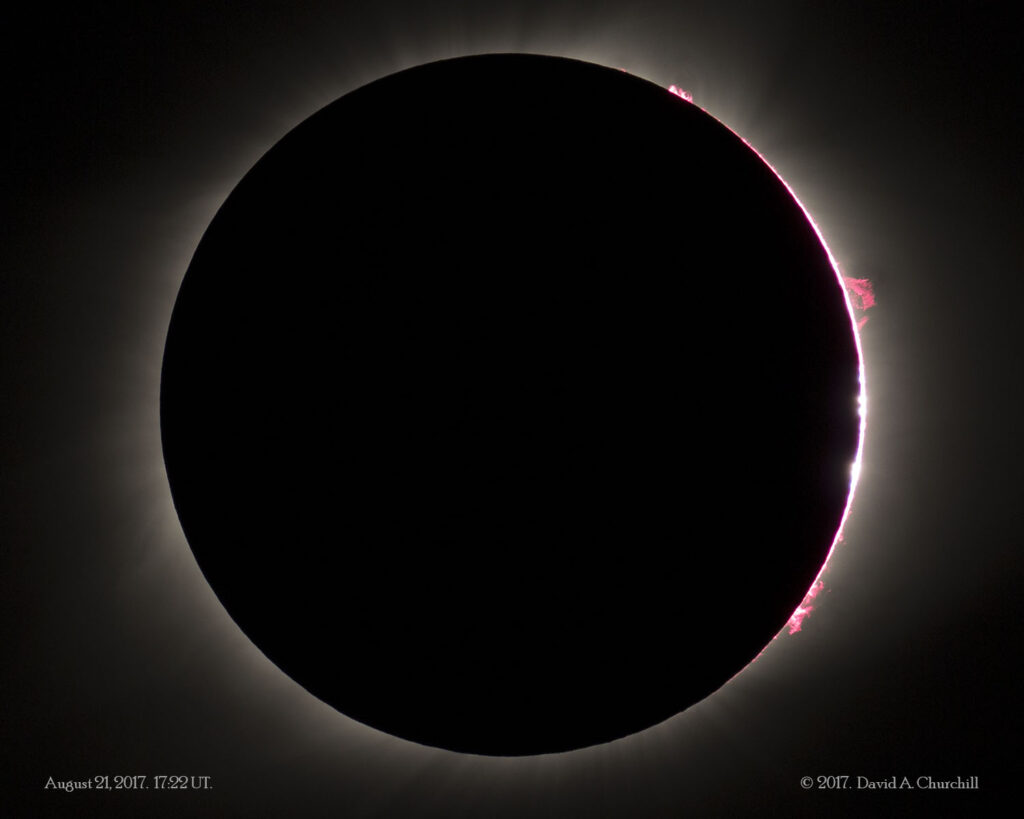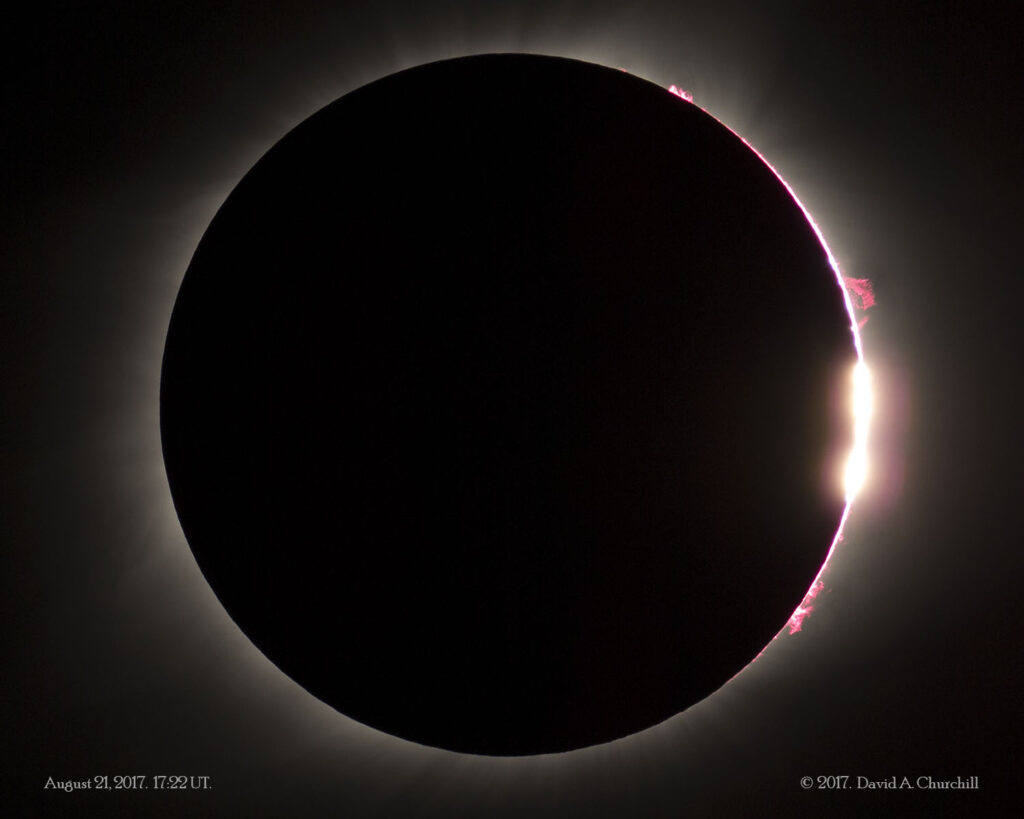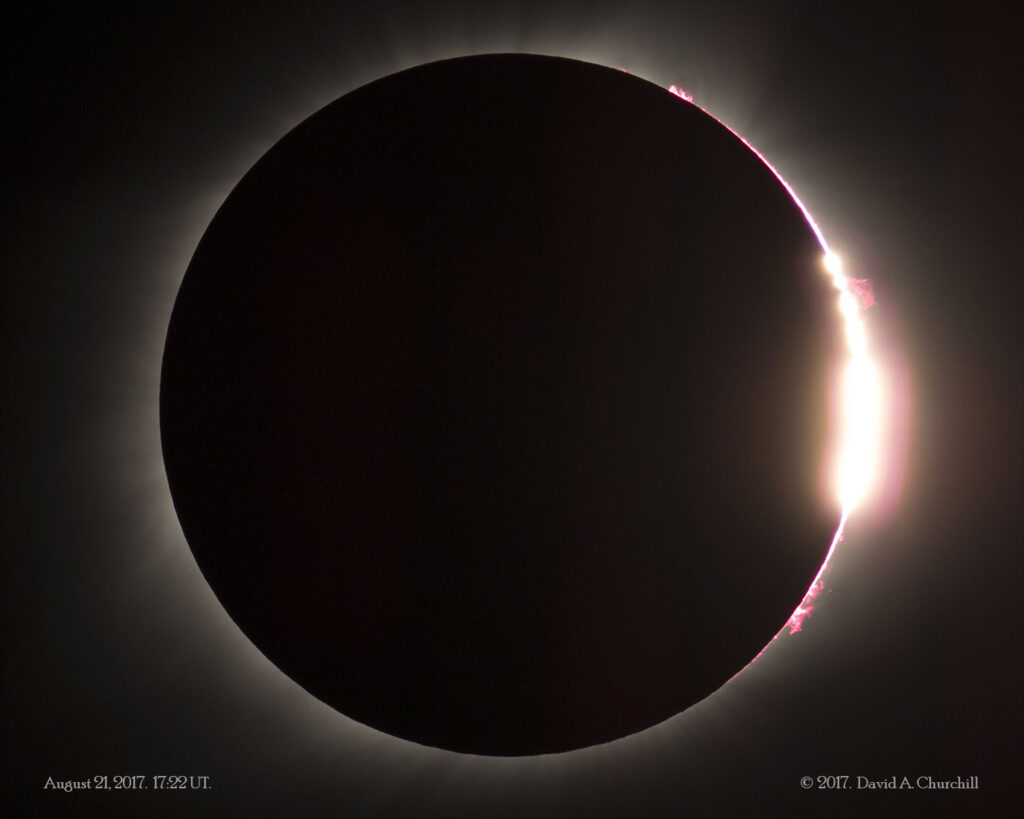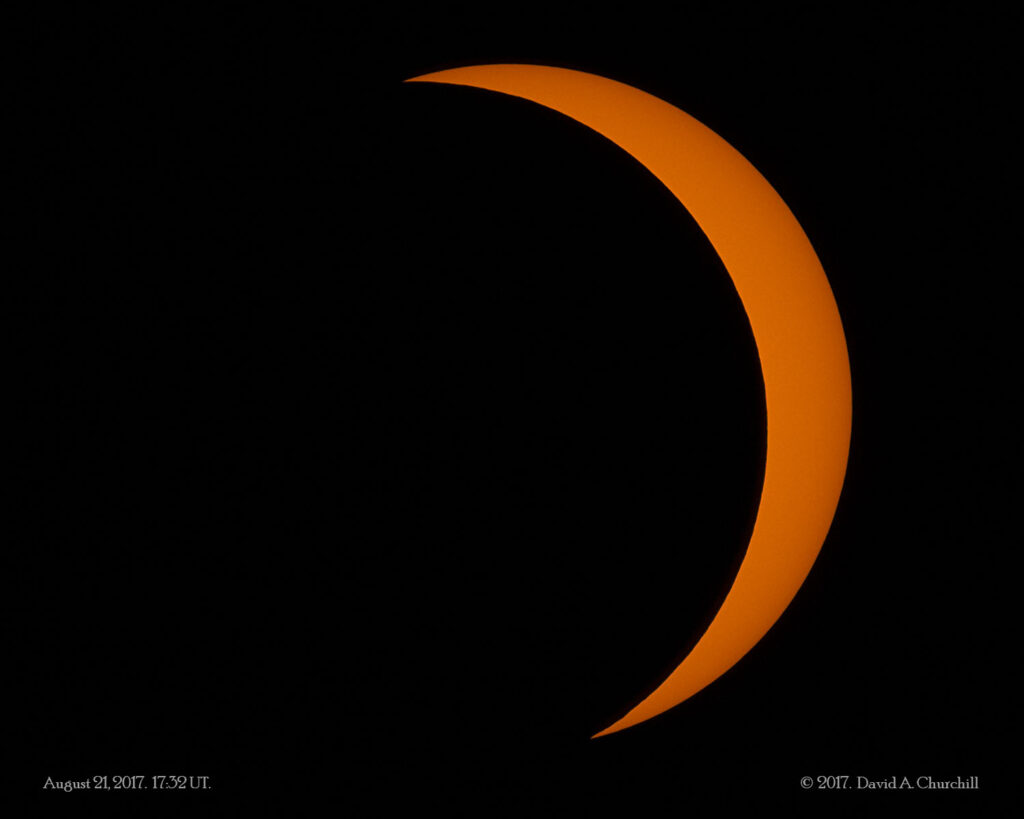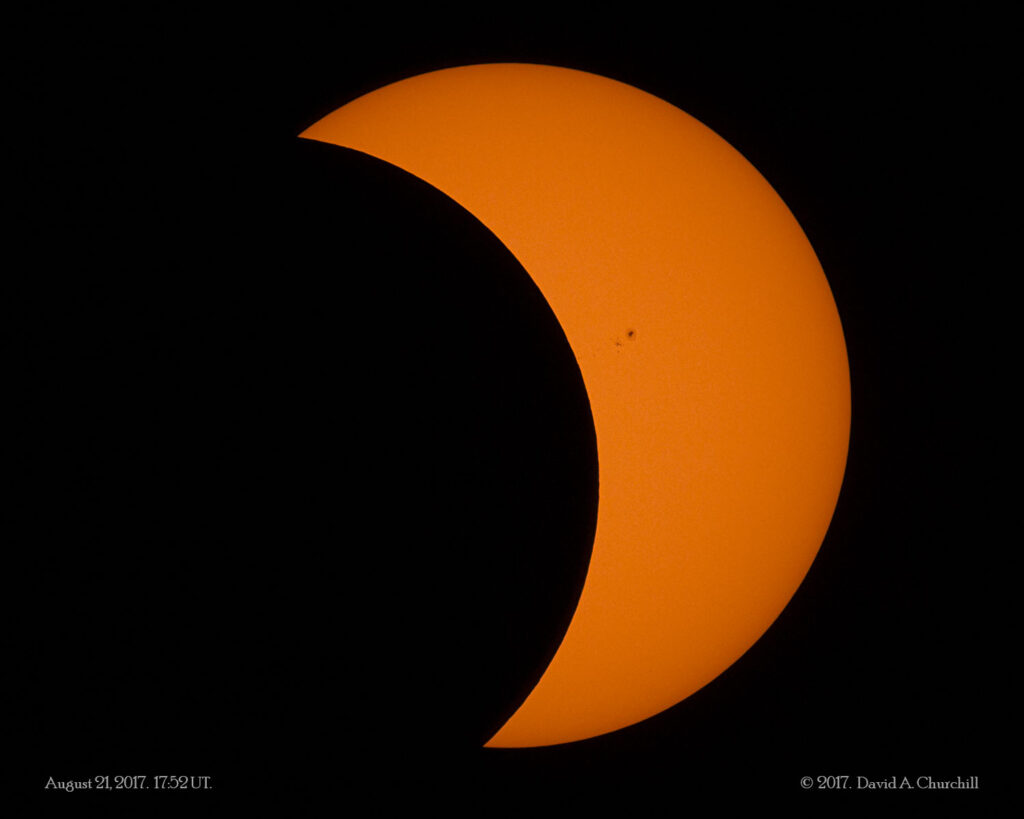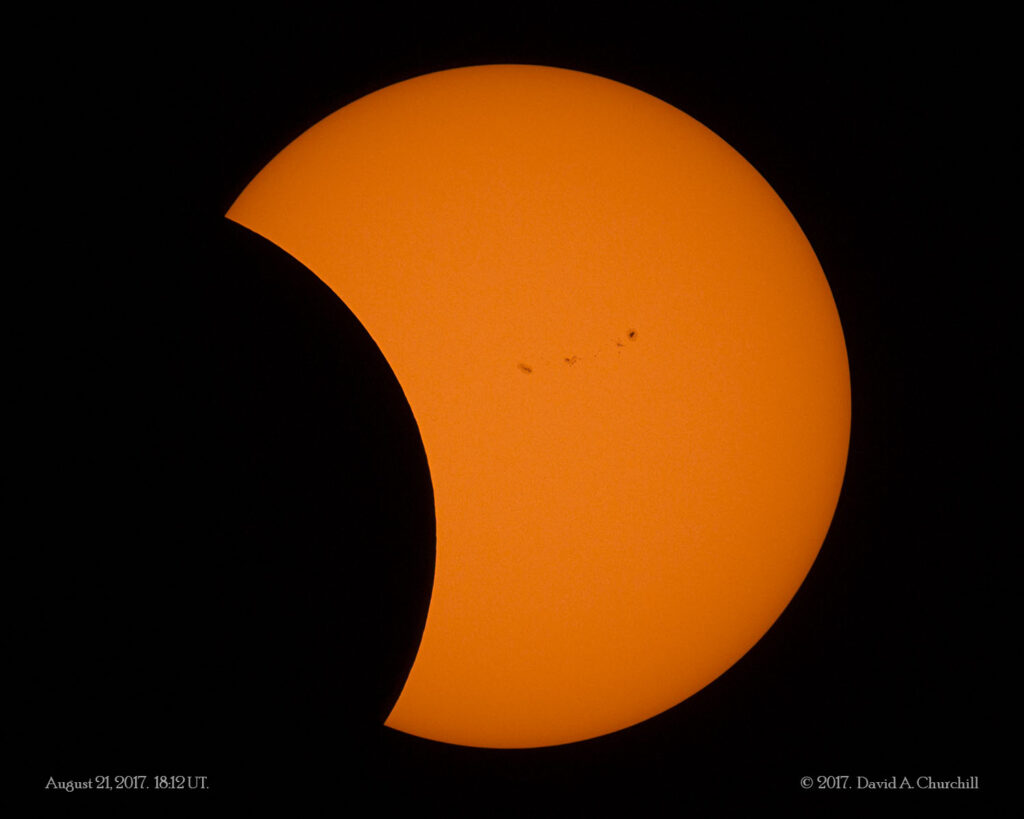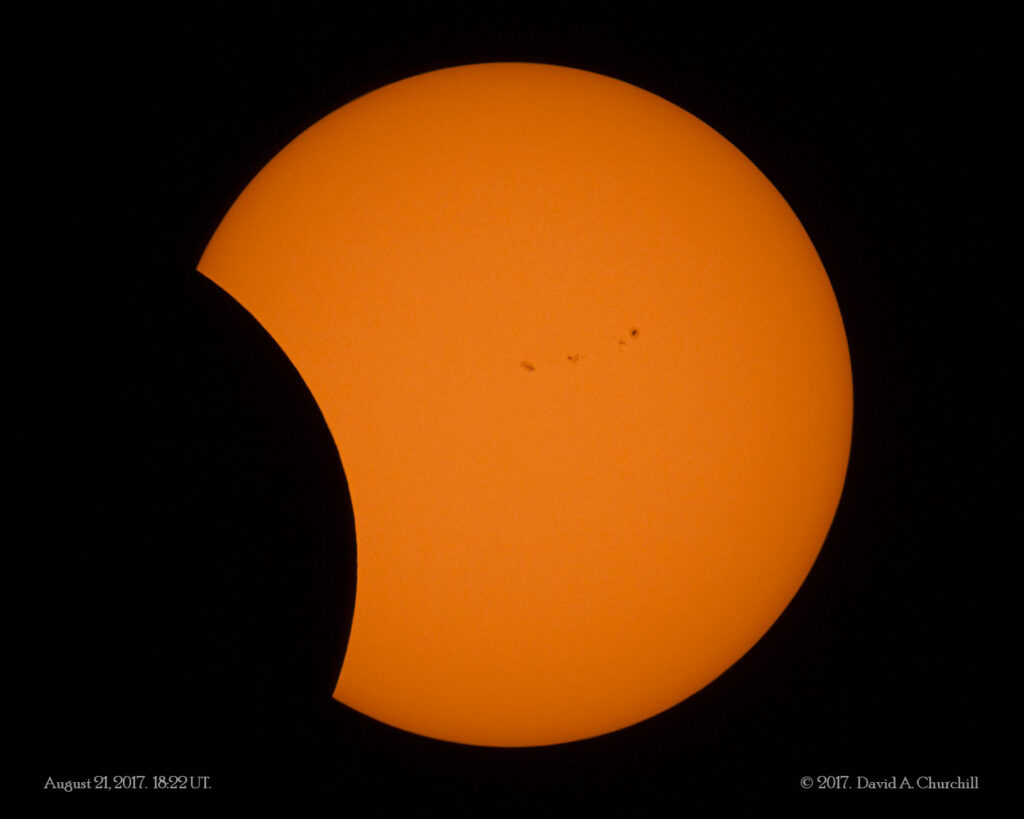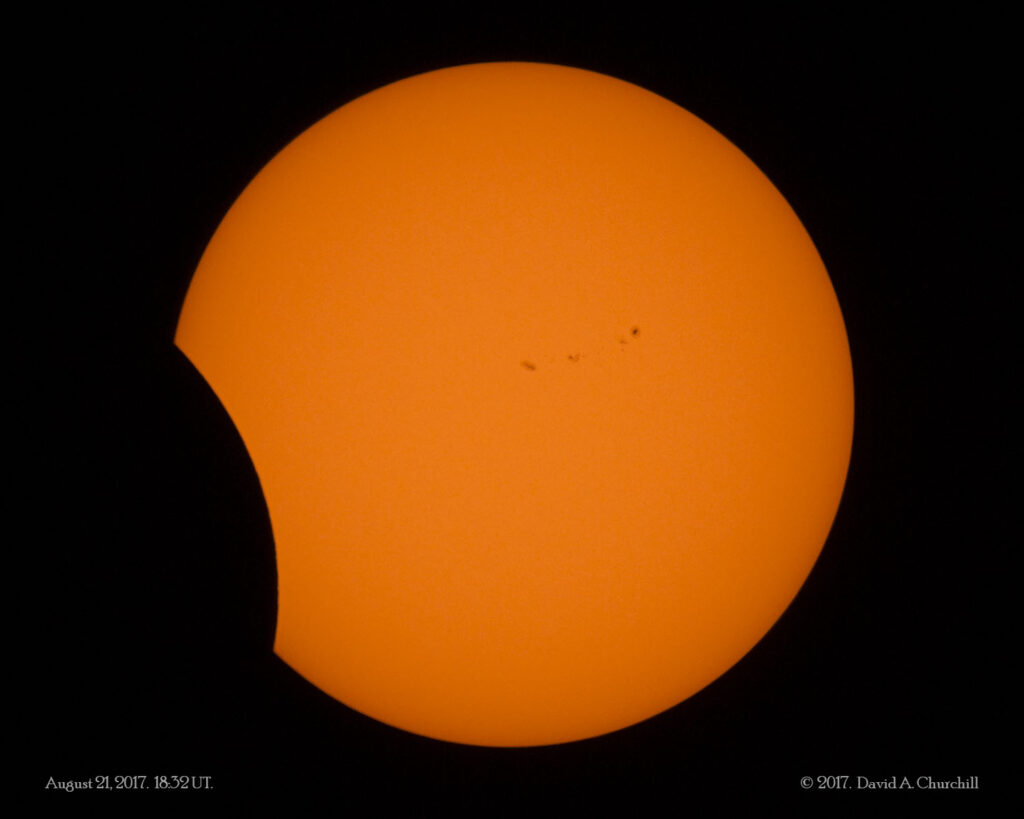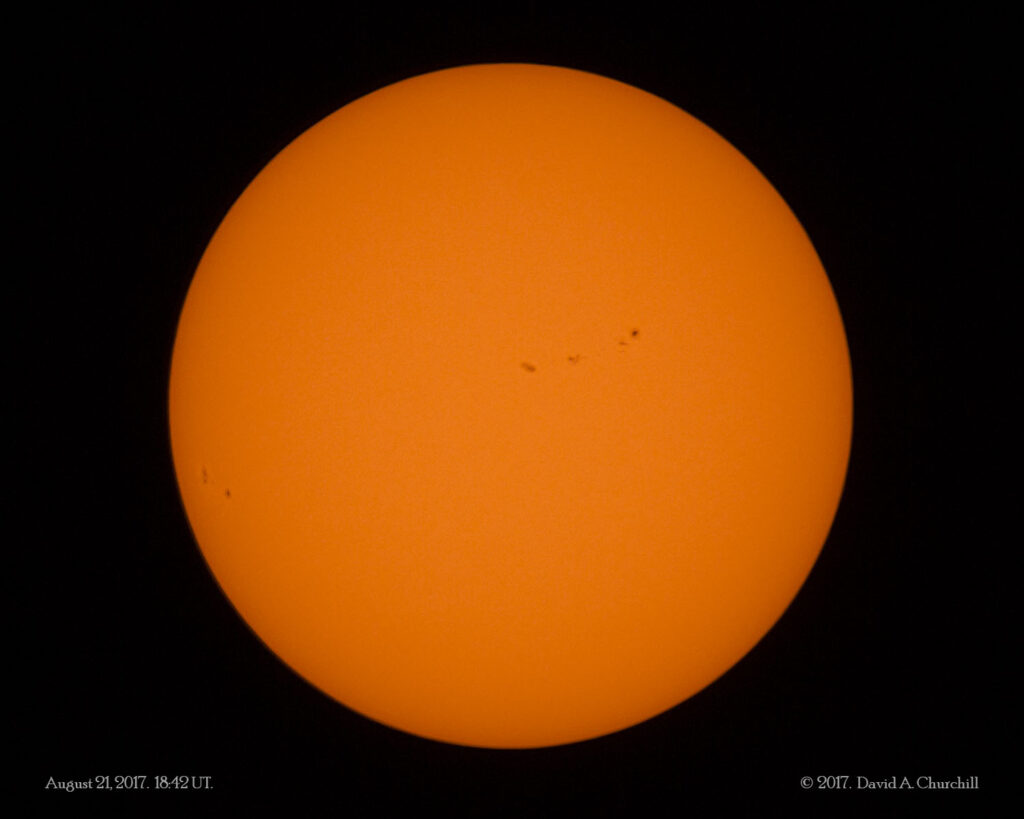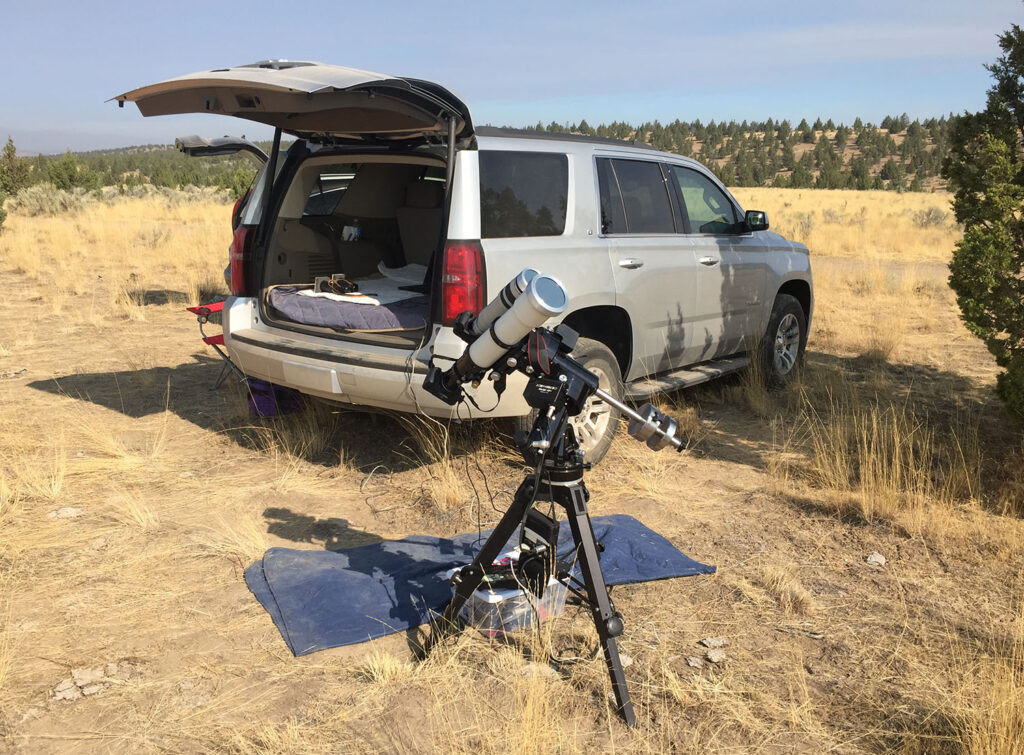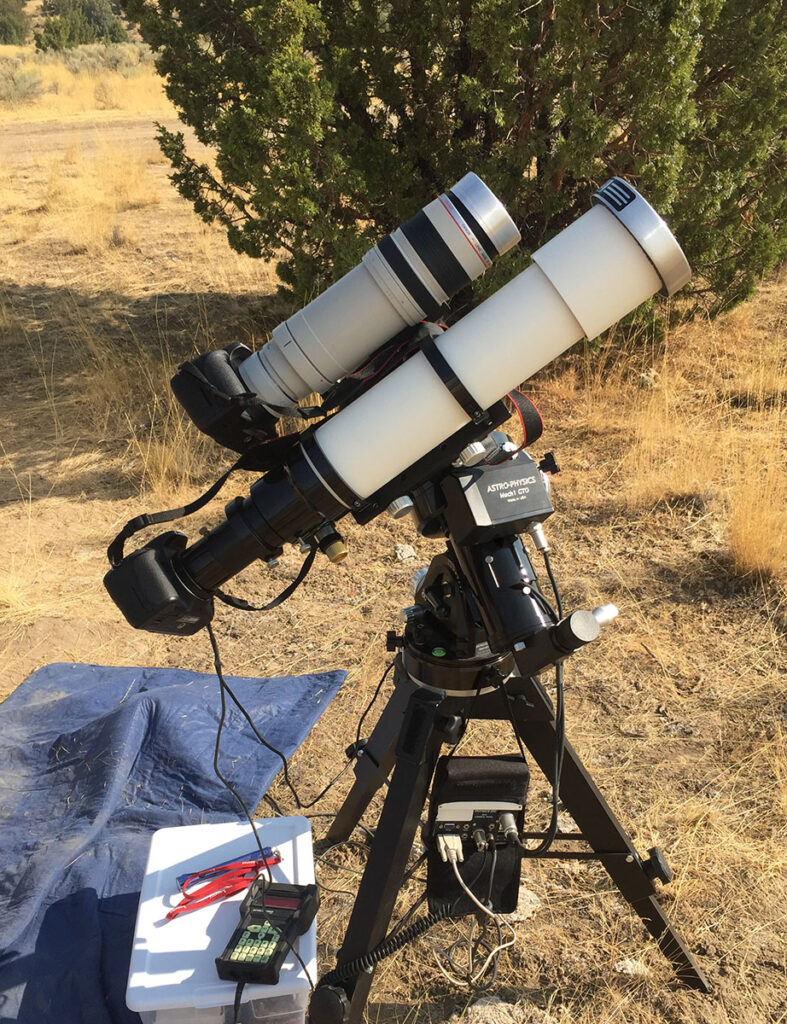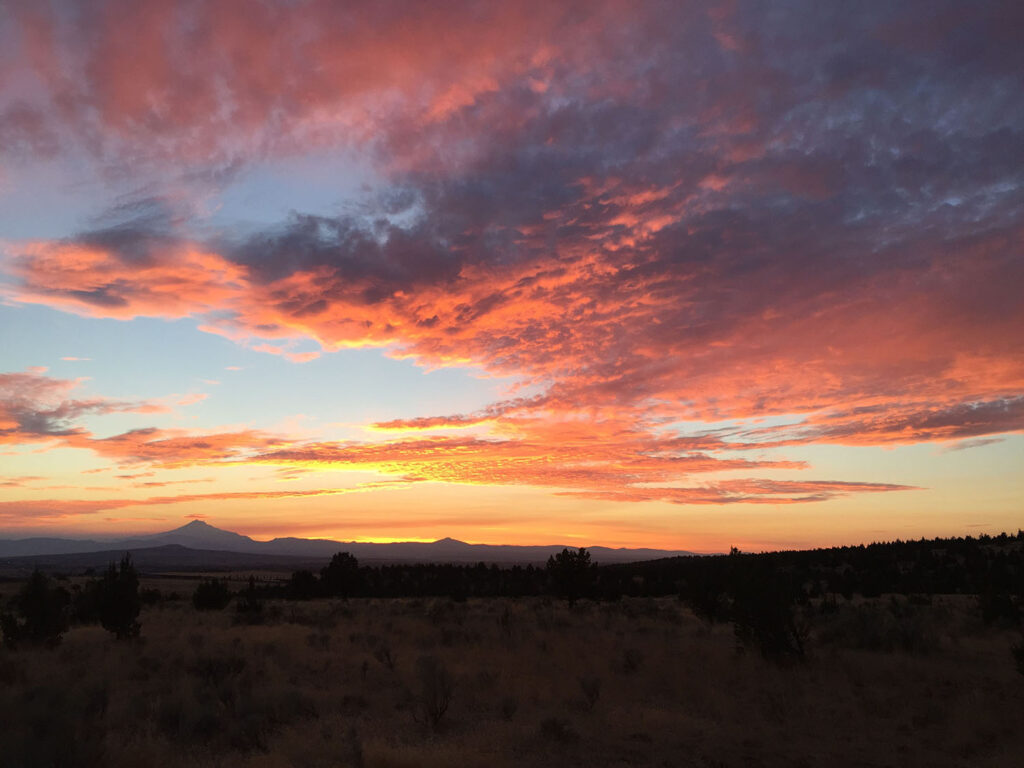Total Solar Eclipse
2017, August 21
- Overview
- Equipment
- Details
A total solar eclipse occurs when the New Moon passes between the Sun and the Earth, and totally blocks out the Sun. This total solar eclipse was the first of two to be visible in the U.S in the space of just less than 7 years, with the second one occurring on April 8, 2024.
I traveled to Oregon and observed the eclipse from the Crooked River National Grasslands, near the town of Madras. Several of us camped over-night at the site and were fortunate to have clear skies for the duration of the event. I imaged the complete eclipse using automation software, as well as capturing video of totality with a telephoto lens. A GoPro camera also captured a wide-field video including the landscape. Being completely free from having to manage the imaging systems, I was able to visually observe the complete event uninterrupted – Truely spectacular.
I traveled to Oregon and observed the eclipse from the Crooked River National Grasslands, near the town of Madras. Several of us camped over-night at the site and were fortunate to have clear skies for the duration of the event. I imaged the complete eclipse using automation software, as well as capturing video of totality with a telephoto lens. A GoPro camera also captured a wide-field video including the landscape. Being completely free from having to manage the imaging systems, I was able to visually observe the complete event uninterrupted – Truely spectacular.
Imaging Telescope: Astro Physics 92mm Stowaway f7
Camera: Canon T3i
Video Telescope: Canon 100-400mm IS USM Telephoto Zoom/Canon 1.4 Extender III – 560mm FL
Camera: Canon T6i
Mount: Astro Physics Mach-1
Thousand Oaks T2 Solar Filter for all Partial Phases
Data Imaged on August 21, 2017.
Data acquisition & Processing by David Churchill.
Total Solar Eclipse of August 21, 2017
Location: Longitude: 121d 03′ 00″ W. Latitude: 44d 35′ 31″ N
Sunrise: 13:14:34 UT.
First-Contact: 16:06:42 UT.
Second-Contact: 17:19:33 UT.
Maximum Eclipse: 17:20:35 UT.
Third-Contact: 17:21:37 UT.
Fourth-Contact: 18:41:04 UT.
Saros Series: 145, Member: 22 of 77
Totality Duration: 2m 04s

